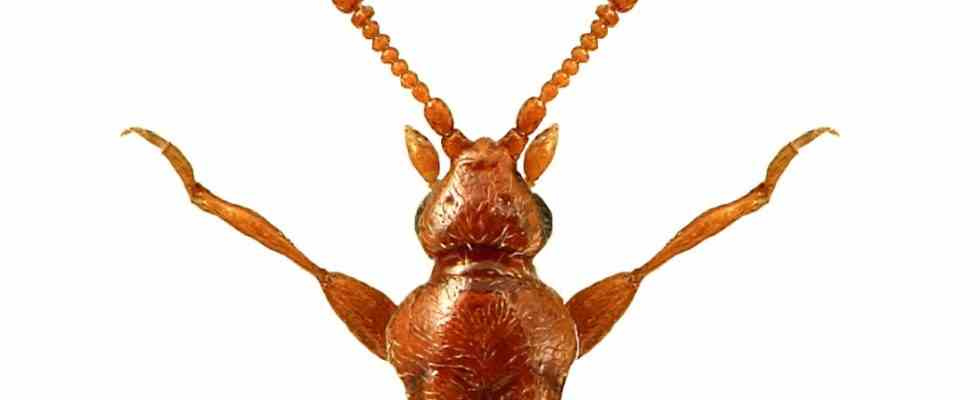The palm beetle Saulcyella schmidtii is just a millimeter in size, resembles a yellow-brown ant and is so rare that it doesn’t even have a German name. The last proof was a good 65 years ago, it was made in 1957 in a forest near Haag in Upper Bavaria. So it’s no wonder that Saulcyella schmidtii is listed as critically endangered on the Red List. But now scientists from the State Institute for Forestry and Forestry (LWF) have discovered another specimen – in the natural forest reserve Damm, which is located in the southern district of Kelheim near the village of Elsendorf.
For biologists, the evidence is a minor sensation. And in two ways. “On the one hand, it shows that our near-natural forests are home to a large number of rare and even extremely rare species,” says Markus Blaschke, who is responsible for natural forests in Bavaria at the LWF. “On the other hand, he makes it clear that our forests have not really been explored even today and that we always discover something new in them if we only look closely enough.”
Palp beetles get their name from the distinctive last limbs of their antennae called palpi. In Central Europe there are about 125 different species. All of them are very small, they are a maximum of two millimeters in size. So far, little is known about the tiny creatures. They live on the ground and in old, often rotten, deciduous trees and seem to have a certain fondness for trees with ant nests. They mainly feed on mites. But even that is not entirely certain.
The natural forest reserve Damm is exactly the kind of habitat that species like Saulcyella schmidtii need. The 76-hectare piece of forest in the hills in the southern district of Kelheim has not been managed for more than 30 years. There are many old pines and beeches in it, including a number of dying and rotten ones. The natural forest reserve is known for its abundance of birds. In addition to numerous songbirds, you can also observe the black woodpecker and pygmy owl here. Saulcyella schmidtii was detected during a systematic species survey that takes place in Damm every five years. The specimen flew into a special trap set up by researchers.

